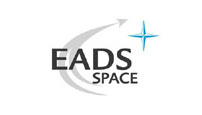First Inmarsat-4 satellite ready for launch

The world’s largest and most sophisticated commercial communications satellite, Inmarsat 4, is due to be launched from Cape Canaveral, Florida, on 10 March. Designed and built by EADS Astrium, Europe’s leading satellite manufacturer, the spacecraft will be launched between 21:42 and 21:59 GMT aboard an International Launch Services’ Atlas V launch vehicle.
Inmarsat has purchased three I-4 spacecraft to provide its Broadband Global Area Network (BGAN), a new service that will bring seamless mobile voice and broadband Internet connectivity around the world.
The first Inmarsat-4 satellite will be positioned in geostationary orbit at 65 degrees East longitude. It will enable Inmarsat to address a wide area covering most of Europe, Africa, the Middle East and Asia, as well as the Indian Ocean. A second satellite is planned for launch in summer 2005 to cover South America, most of North America, the Atlantic Ocean and part of the Pacific Ocean. A third satellite is also at an advanced stage of production. All three satellites are identical and interchangeable – their coverage is programmable and can be reconfigured in orbit.
These satellites are based on EADS Astrium’s Eurostar E3000 satellite platform, three of which entered commercial service in 2004. All three Inmarsat-4 satellites are also equipped with electric propulsion systems for station keeping. Their 45m solar arrays generate 14 kW of electrical power at beginning of life and the spacecraft weighs approximately 5,950 kg at launch. The main body is 7 metres high and the unfurlable antenna reflector has a diameter of about 10 metres. EADS Astrium’s facilities in the UK, Germany, Spain and France have all contributed to the design and manufacture of this highly innovative spacecraft.
The spacecraft will provide continuity with existing Inmarsat systems and offer additional capacity and performance. They will also provide the new Broadband Global Area Network service over the major land masses and a large part of the ocean surface. This will extend coverage of third generation terrestrial mobile networks such as UMTS (3G) for telephony, data and high speed Internet access to laptop and palm-sized terminals. This will enable business travellers, disaster relief workers, field-based oil researchers, journalists, etc. to operate a virtual office anywhere in the satellite footprint, including on maritime or air routes.
In order to support small terminals over the whole area with the high signal strength required, each satellite can digitally form more than 200 spot beams. More power and spectrum can be allocated to certain beams, further enhancing mission flexibility to cope with the fluctuations in traffic. On-board digital signal processors route the signals to and from the different beams, acting like a switchboard in the sky: any uplinked signal can be routed to any mobile downlink beam and vice versa. Frequency agility and extensive frequency re-use across the beams permit efficient utilisation of the available channels in the L-band spectrum to provide significantly increased capacity.
The satellites will link to gateways and directly to users equipped with different types of ground terminal, ranging from hand-held to transportable terminals with data rates of up to 1 Mbps. A typical user terminal looking like a small laptop, will receive at 432 Kbps.
The Inmarsat-4 satellites also feature 19 wide beams and full global coverage to provide continuity of existing Inmarsat services for maritime, air and emergency services. A navigation package extends and enhances the navigation signals already available on Inmarsat-3 satellites for the air traffic community.
Andrew Sukawaty, CEO of Inmarsat, said: “EADS Astrium has again demonstrated its technical expertise by designing and building such a complex and flexible spacecraft featuring the most advanced technologies. The extraordinary I-4 fleet of satellites will allow Inmarsat to provide mobile users with high speed internet connectivity virtually anywhere in the world.”
Antoine Bouvier, CEO of EADS Astrium added: “Inmarsat-4 is certainly one of the most sophisticated communications satellites ever built, and tangible proof of our ability to build advanced and flexible communications payloads. We are proud of this achievement, and thank Inmarsat for the confidence they had in EADS Astrium on this innovative and ambitious programme.”
Technical features of Inmarsat-4 F1
Spacecraft
- Main body dimensions: 7 x 2.9 x 2.3m
- Solar array span: 45m
- Solar array power: approximately 14 kW at beginning of life
- Payload power: 9 kW at end of life
- Chemical and electrical (plasma) propulsion systems
- Launch mass: 5,950kg approx
- Orbital location: 65°E in geostationary orbit (F2 will be at 54°W)
- Design lifetime: 10 years (target 13 year mission life)
Payload :
- Processed Mobile Mission payload
- Channel bandwidth: 200 kHz or any multiple
- Number of channels: 630 channels
- Forward C-band to L-band with return L-band to C-band
- Direct L-band to L-band user routing on-board
- C-band to C-band link for station cross-link
- Number of SSPAs: 150 (120 active) grouped in multi-port amplifiers
- Number of digitally-formed beams / services:
- Personal Multimedia Communications: 228 spot beams
- Existing and Evolved: 19 wide beams
- Global Coverage
- Mobile link EIRP: approximately 67 dBW
- Antenna feed array: 120 active elements in L-band
- Antenna reflector: unfurlable type, elliptical 9 x 12 m once deployed in
- orbit (80m2)
- Coverage: programmable and reconfigurable in orbit
- Navigation Package
- Up-link in C-band
- Down-link in L1 to L5 bands
EADS ASTRIUM
EADS Astrium is Europe’s leading satellite specialist. Its activities cover complete civil and military telecommunications and Earth observation systems, science and navigation programmes, and all spacecraft avionics and equipment. EADS Astrium is a wholly owned subsidiary of EADS SPACE, which is dedicated to providing civil and defence space systems. In 2003, EADS SPACE had a turnover of more than ?2.4 billion and about 12,000 employees in France, Germany, the United Kingdom and Spain. EADS is a global leader in aerospace, defence and related services. In 2003, EADS generated revenues of ?30.1 billion and employed a workforce of more than 100,000.









